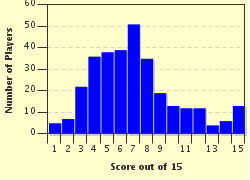Quiz Answer Key and Fun Facts
1. Crimean War. What was the name of the Jamaican boarding house keeper and self-trained nurse who travelled to the Crimea and opened a convalescent home and hotel between Balaclava and Sevastopol?
2. American Civil War. What role did Dorothea Dix, campaigner for the rights of the mentally ill, play during the Civil War?
3. Second Boer War. What scandal in the conduct of the war did Emily Hobhouse, British welfare campaigner, expose?
4. WWI. Emmeline Pankhurst was a co-founder of the Women's Social and Political Union (WSPU) and was a leading figure in the struggle for women's political rights in Britain. What was her attitude to the First World War?
5. WWI. New Zealand's contingent included several thousand Maori soldiers and by 1917 there were enough Maori in the forces to form the New Zealand (Maori) Pioneer Battalion. What was the name of the Waikato leader who discouraged her followers from taking part in the war on the grounds that the British Empire had invaded and occupied their lands?
6. WWI. Edith Cavell was a nurse executed in 1915 by the German military authorities for assisting more than 200 Allied soldiers to escape from German occupied Belgium. Where was Nurse Cavell born?
7. WWI. Who or what was 'Dennis Smith'?
8. WWI. Gertrude Stein, American feminist and writer, was in Europe for much of the First World War. How did she and her partner Alice B Toklas, with the assistance of Stein's 'Auntie', become involved in the war in 1916?
9. WWI. Who was Maria Leontievna Bochkareva (also known as Yashka)?
10. WWII. Haika Grossman was an Israeli politician. As a young woman during WWII, what activity is Grossman best known for?
11. WWII. This woman was a German test pilot. She took part in trials of rocket and jet aircraft and was the only woman awarded the Iron Cross First Class during World War II.
12. WWII. Nancy Wake ('the White Mouse') served as a British agent working with the French resistance. Where was she born?
13. WWII. The Duke of Windsor and his new wife (formerly Wallis Simpson) were the personal guests of a European leader soon after their marriage in 1937. Who was it whose invitation to the couple caused lasting damage to their reputation in the United Kingdom?
14. WWII. Russian medical orderlies in the Battle of Stalingrad were mainly drawn from which group?
15. WWII. Who or what was the White Rose?
Source: Author
Macjaq
This quiz was reviewed by FunTrivia editor
bloomsby before going online.
Any errors found in FunTrivia content are routinely corrected through our feedback system.

